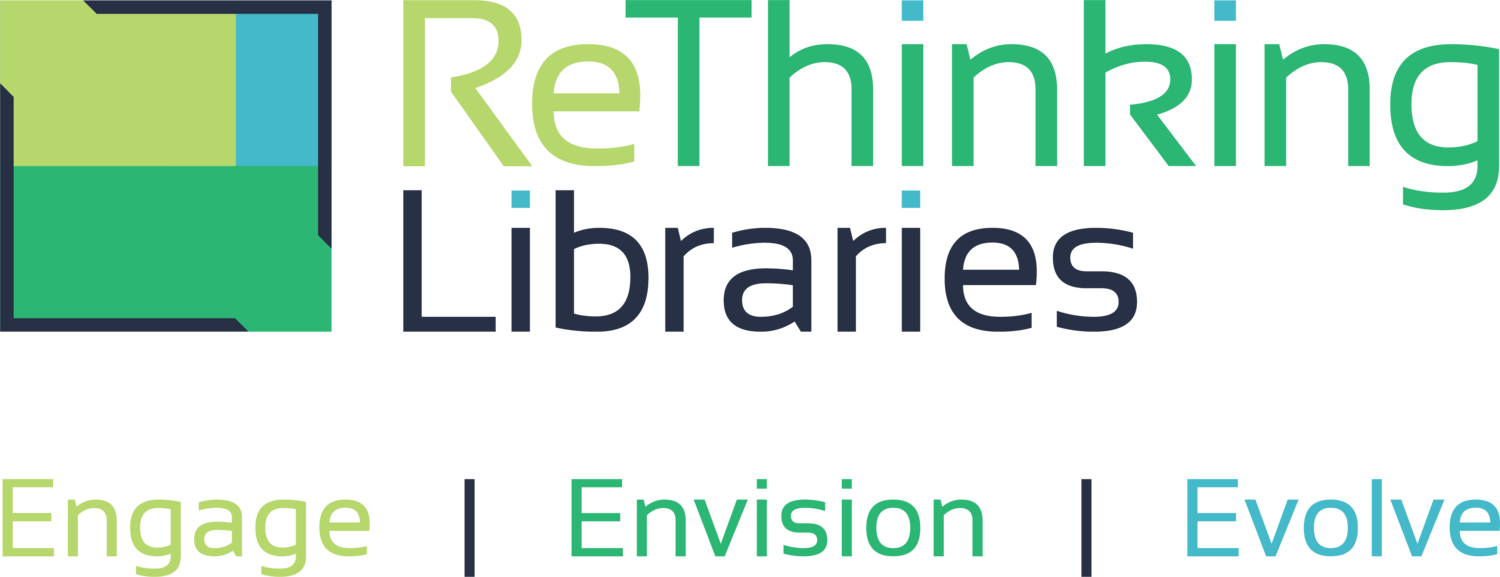Managing Change in Your Library: Why It’s Hard—and What to Do About It
Change is inevitable in any organization, and libraries are no exception. Whether it's a new building, updated technology, or shifts in staffing or service models, the challenge isn't just the change itself, it’s how people respond to it. At ReThinking Libraries (RTL), we see this struggle frequently in our work with public libraries. While library staff and leadership often agree on the need for change, actually carrying it out can be difficult.
According to RTL Principal Janet Nelson, resistance to change is often more emotional than logical. “Even when things aren’t working well, staff have a hard time letting go of the familiar,” she says. “There’s a fear factor. Change is scary, so people retreat to what they know.”
This resistance can show up in different ways. Managers may hesitate to push forward with necessary changes, choosing smaller, more palatable updates instead of tackling big-picture shifts. Staff may dismiss new service models—like self-check machines—because they assume patrons won’t want them, even though many patrons value speed, privacy, or are simply used to self-service in other settings. And sometimes, staff members become territorial about their spaces or responsibilities, finding it difficult to envision alternative ways of working.
A major source of disconnect, Nelson explains, is how information flows through an organization. She uses the acronym ELMA—Executives, Leadership, Management, Associates—to describe how decisions move from the top down. Decisions start at the executive level, usually behind closed doors, about new ideas or a new approach. Executives have time to understand and get behind an idea.
Each level down, you lose a little of the background and understanding. When introduced to leaders, it’s the second time execs have heard it. When introducing the change to managers, it’s the second time for leaders and third time for executives.
“By the time an idea reaches associates, executives and leaders have heard it multiple times and had a chance to process it,” she says. “Associates are hearing it for the first time, so their questions and hesitation are normal—but often misunderstood.”
So how can library leaders navigate these dynamics?
1. Start with the “Why”
Communicate the goals behind a change clearly and early. Staff need to understand the purpose of the change and how it connects to the library’s mission. Be honest about both the opportunities and the challenges.
2. Listen—Really Listen
Once a change is introduced, take time to listen to concerns. Some may be reactionary and fade with time; others may highlight important gaps in planning. One-on-one meetings or small group discussions can provide the space staff need to voice their thoughts.
3. Engage Staff in the Process
Inviting staff to participate in planning doesn’t mean giving up leadership—it means creating better solutions. When people feel heard, they’re more likely to support implementation, even if their idea isn’t chosen.
4. Plan Ahead
Anticipate the impact of major changes, whether it's a construction project, software update, or shift in services. Allow time for planning, communication, and adjustment. A rushed rollout nearly always leads to frustration and pushback.
5. Communicate Continuously
Change doesn’t end after the announcement. Staff who were initially on board can change their minds as plans become more concrete. Keep communication going throughout the process, especially during long projects. As Nelson notes, “People need to understand not just what is happening but why—and how things will unfold in stages.”
6. Address Informal Dynamics
In every organization, informal conversations and strong personalities can influence how change is received. A lack of communication can quickly lead to misinformation and distrust. Make space for informal check-ins and watercooler talk—led by leadership—so you stay ahead of the narrative.
7. Bring in Outside Support
Sometimes, an outside voice can help. RTL often facilitates change as part of strategic planning or facility projects. We’re able to talk to staff at all levels, listen without judgment, and bring fresh perspectives from our work with hundreds of libraries. If needed, we can also recommend specialized organizational change consultants.
8. Celebrate Progress
In the midst of navigating change, it's easy to focus solely on what's next—and forget how far you've come. But taking time to acknowledge progress is a critical part of successful change management.
“Too often, we forget to look back,” says Nelson. “Documenting progress and celebrating wins reinforces the value of the work and helps people see that their efforts are making a difference.”
This doesn’t have to be elaborate. A simple thank-you at a staff meeting, a shoutout in the internal newsletter, or a small celebration when a project milestone is met can go a long way.
Library change doesn’t have to be chaotic or divisive. With thoughtful planning, ongoing communication, and a commitment to listening, your team can move forward together—even when the road is uncertain.
Interested in how RTL can support your library through change? Visit ReThinkingLibraries.org to learn more about our approach to strategic planning, space transformation, and staff engagement.



